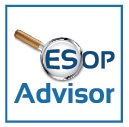ESOP Feasibility Studies
When we perform an ESOP feasibility study for a client that already has the successor management in place, and has available a certain amount of cash flow to apply toward buying out a retiring owner, the numbers side of the feasibility study typically involves the following issues:
- Participant perception of contribution as a percent of pay. Is it attractive? How does it compare with the previous plan, if any?
- Participant perception of investment gains as a percent of his account balance. Is it going to be attractive and reasonable?
- Efficient use of cash. Will the plan be able to use all cash to make loan payments and buy-backs of shares from former employees or those who elect diversification?
- Will the transactions create double taxation for any year the corporation is a C corporation?
- Estimation of possible cash needs in each of the first 10 to 15 years of the ESOP - including contributions to the ESOP to service debt, cash needed for any notes related to retiring shares outside of the ESOP, and contributions or dividends required to honor distributions:
- For those who reach Normal Retirement Age in that period.
- For those who achieve age 55 and 10 years of participation in that period.
- For other former employees the company may want to buy out, prior to retirement age.
- Estimation of the Repurchase Obligation and its present value impact on the fair market value of the company.
- Compliance with Code Section 404 limits - the maximum annual company contributions to all plans combined, including the ESOP.
- Compliance with Code Section 409(p) if the employer is an S corporation - the ESOP must benefit a broad group of employees, not just a select few.
- Compliance with Code Section 415 limits - the maximum that can be credited to any one participant in all plans combined.
- Compliance with the market value rule on dividends - when using dividends to make loan payments, newly released shares credited to a participant with ESOP allocated shares must have a market value at least equal to the cash dividend earned by that participant for that plan year.
If we can help you with an ESOP feasibility study, please don’t hesitate to contact us.



